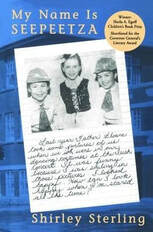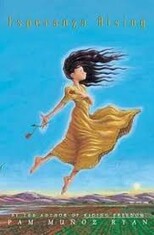A while ago Sophia started talking with Carlin ( another scholar I love to hear from at conferences) and then they were presenting together. I have not surprized that their friendship developed into an important academic partnership. In this post they talk about one of the ideas from their new book--Letting Go of Literary Whiteness. The book was published last Friday. I ordered my copy several weeks ago. I can't wait for it to arrive.
Enough from me, let's hear from Sophia and Carlin.
When Selecting Diverse YA Texts Is Not Enough:
Racializing Reader Responses of YAL with White Readers
by Sophia Tatiana Sarigianides & Carlin Borsheim-Black
| Carlin selected Kwame Alexander’s The Crossover for her undergraduate class of pre-service elementary Language Arts teachers, most of whom were White, for many reasons. A beautifully-written verse novel featuring an African-American protagonist who loved basketball, language, poetry and his family, she was confident that her students would connect with it. She coupled it with an article focusing on the Black Arts movement to guide the class to consider whether Alexander’s novel reflected characteristics of African American Literature. This YA novel was the 6th text in a class explicitly addressing cultural pluralism in children’s literature; students had already read texts like Copper Sun, My Name is Seepeetza, Weedflower, and Esperanza Rising. |
| How could Carlin’s students’, most of whom--but not all of whom--were White, have missed the fact that Alexander’s characters were Black? To be clear, these students were not aloof or resistant. They were smart and engaged and had been on board for learning about systemic racism through historical narratives thus far. As Carlin and Sophia reflected on this incident more, they realized that there may have been a couple of things going on. We remembered the controversy around portraying Rue of The Hunger Games as Black in the filmed version. Despite a description of Rue as having “dark brown skin and eyes” (Collins, 2008, p. 45) many White readers had clearly assumed that she was White—and responded in a racist backlash when the character was cast as Black. Garcia & Haddix (2015) remind us that the prevalence of Whiteness in literature—in and out of schools—contributes to assuming Whiteness as a default. Readers, especially White readers tend to assume that characters are White unless they are explicitly indicated as otherwise. |
So what to do as a teacher who already knows about the importance of diversifying our text selections and ensuring that we invite students--all students—to read positive, heroic, everyday stories featuring people of color, across the year’s curriculum? The big epiphany for Carlin here—as difficult it is to admit—is that although she and her students ended up talking about Blackness in the novel at length, what they had not talked about was Whiteness. They failed to talk about the ways Whiteness and racial assumptions color White readers’ responses to literature.
Therefore, one strategy that we promote, especially for White readers unaccustomed to having to consider the role of our Whiteness in affecting how we respond to texts is to teach students how to racialize their responses as readers.
We adapt questions shaped by Deborah Appleman in her (2015) Critical Encounters ETC where she helps teachers introduce a reader response lens to high school students by asking students to consider the context for reading a text, the details in the text itself, and also what the reader brings to the transaction. In efforts to racialize a reader response lens, we modify the kinds of questions she asks to ensure that readers consider racial factors more explicitly. For each set of racialized reader response questions below, we use italics to signal some possible responses in relation to The Crossover that might have helped Carlin’s students address the challenges they faced in reading Blackness.
What is the racial context in which you are reading this text? Any recent local, regional or national events that might be pertinent to consider? How did the fact that students read this novel after first reading a set of texts that focused on racism affect their expectations of this text? How might the fact that students read this novel in a course on cultural pluralism in children’s literature affect how they read the novel?
TEXT
What are the major plot points? How do they reinforce or interrupt dominant ways of thinking about race/ism? How do themes reflect or interrupt dominant ways of thinking about race/ism? How are characters of color represented in the text, especially in relation to white characters? To what extent does the form or style of the book reflect the racial perspective of the text? What is the racial identity of the author, and how is that reflected in the text? What is the racial identity of the intended reader, and how do you know? Alexander made a deliberate decision not to name the race of his characters as Black, something that is far more characteristic of texts by and about Whites. Why might he have made this decision? What are its effects? How does this decision contribute to the themes of the text?
READER
How does your racial identity shape your reading of the text? Does the text position you as a racial insider and how do you know? Which details of the text do you relate to? How might not relating to some aspects of the text, especially in relation to race, be significant? Are there facets of the text that are unfamiliar to you or challenging? What might that reveal about your racial assumptions? Given White students’ misreading of the characters in The Crossover as White, what does that reveal about their racial assumptions about characters like those in the novel? What are the consequences of such a misreading?
Collins, S. (2008). The Hunger Games. New York: Scholastic Press.
Garcia, A., & Haddix, M. (2014). The revolution starts with Rue. In S. P. Connors (Ed.), The politics of panem: Challenging genres (pp. 203–217). Rotterdam: Netherlands, Sense Publishers.











 RSS Feed
RSS Feed